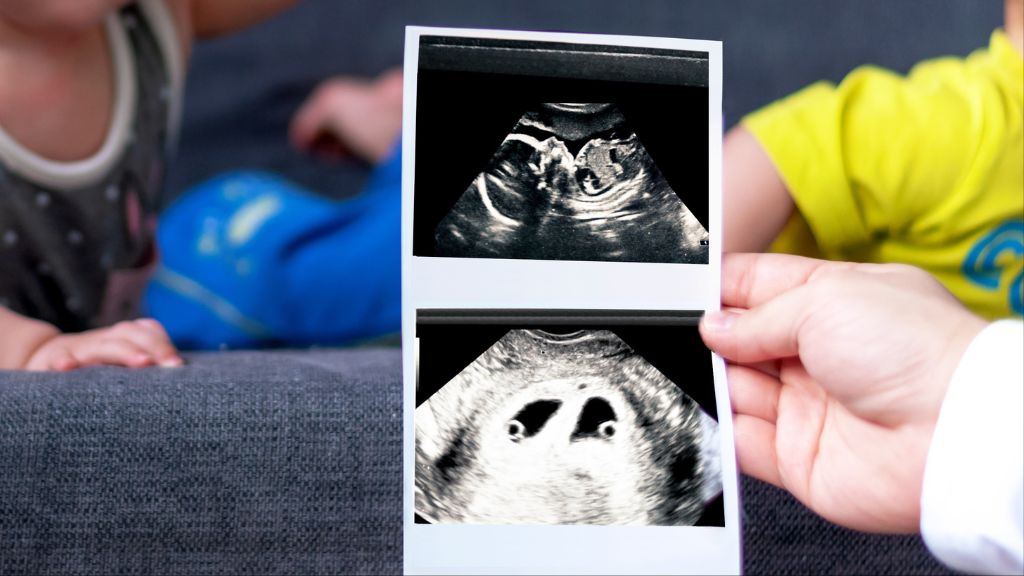Texas woman gives birth to rare set of twins conceived one week apart. How is this possible?
The twins were born in October.

In an extremely rare case, a Texas woman became pregnant while already pregnant and ultimately gave birth to twins who had been conceived roughly one week apart, according to news reports.
The 30-year-old woman, named Cara Winhold, initially learned she was pregnant in March 2021, and when she received an ultrasound five weeks later, there appeared to be just one embryo developing in her uterus, the Daily Mail reported. However, since Winhold had a history of miscarriages, her doctor asked that she come in for another scan just two weeks later, to check that the pregnancy was still progressing well. At that follow-up, not one, but two implanted embryos popped up on the scan.
"On the very first scan, there was a sac with one baby and then when I went back there was a really tiny little sac in the corner that had another baby in it," Winhold told the Daily Mail. "You could see baby A was more developed, whereas the other one was like a tiny dot."
This rare phenomenon, in which a second pregnancy occurs in the midst of another pregnancy, is known as "superfetation."
Related: Woman gives birth to twins — 11 weeks apart
Few cases of superfetation are described in the medical literature, but of those reported, most have occurred in women undergoing fertility treatments, such as in vitro fertilization (IVF), according to Healthline. This procedure involves transferring fertilized embryos into the uterus, and superfetation may occur if the patient then ovulates and that released egg gets fertilized in the weeks following the transfer.
In Winhold's case, she had not undergone any fertility treatments, she told the Daily Mail. Such cases are considered exceptionally rare, in part, because three unlikely events must happen simultaneously, Live Science previously reported.
Get the world’s most fascinating discoveries delivered straight to your inbox.
First, an ovary must release another egg, or ovum; this typically doesn't occur because, at the start of pregnancy, the body releases hormones to halt ovulation. Second, that egg must be fertilized by a sperm cell; this is improbable because mucus builds up in the cervical canal in early pregnancy, forming a "plug" that blocks the passage of sperm. And finally, the fertilized egg must implant in the uterus. With one embryo already implanted and developing, there may not be much room for a second. Typically, specific hormones are released during implantation to help the process along, and this release wouldn't happen with a pregnancy already underway.
If all these improbable events occur, two pregnancies will ensue at the same time, but the resulting fetuses will be two different gestational ages, meaning they'll be at different stages of development. (This differentiates such twins from fraternal twins, who develop from two fertilized eggs but are the same gestational age, according to the Live Science report.) Winhold said that, according to her doctor, "most likely I ovulated twice, released two eggs, and they got fertilized at different times, about a week apart," she told the Daily Mail.
Winhold gave birth to her rare set of twins in October 2021, according to the Daily Mail. Colson, the baby who was conceived first, was slightly larger than his twin, Cayden, at birth and still outweighed him at their six-month checkup.
Originally published on Live Science.

Nicoletta Lanese is the health channel editor at Live Science and was previously a news editor and staff writer at the site. She holds a graduate certificate in science communication from UC Santa Cruz and degrees in neuroscience and dance from the University of Florida. Her work has appeared in The Scientist, Science News, the Mercury News, Mongabay and Stanford Medicine Magazine, among other outlets. Based in NYC, she also remains heavily involved in dance and performs in local choreographers' work.


